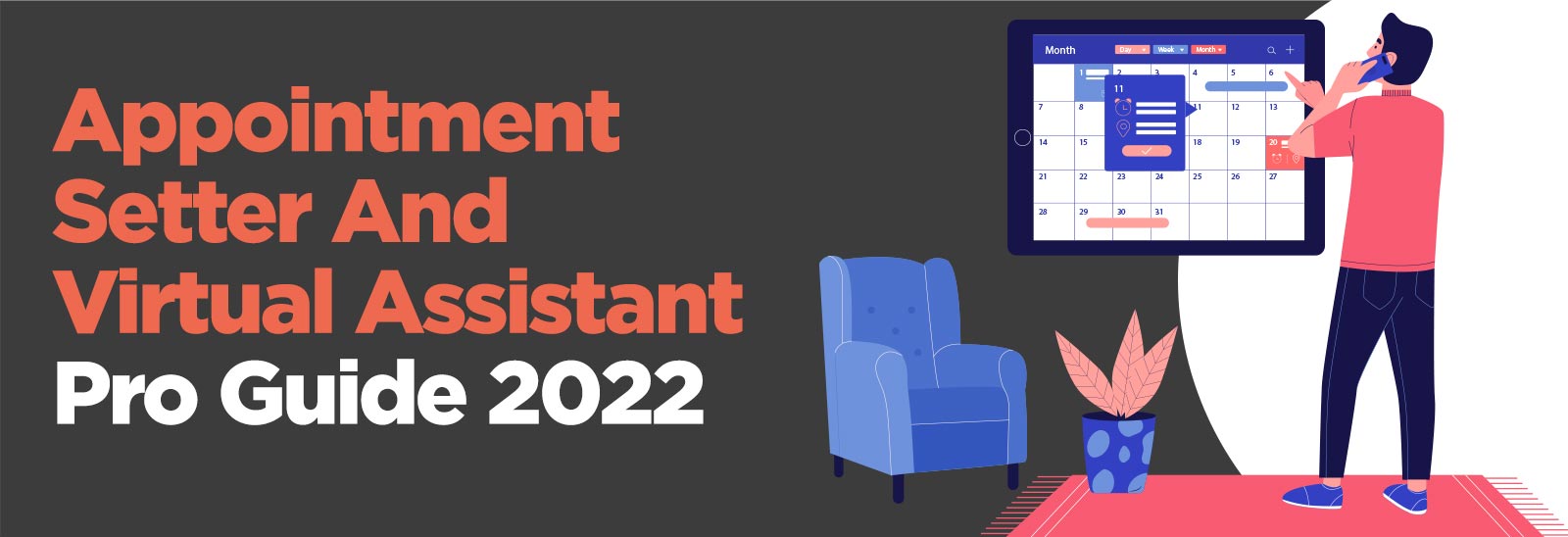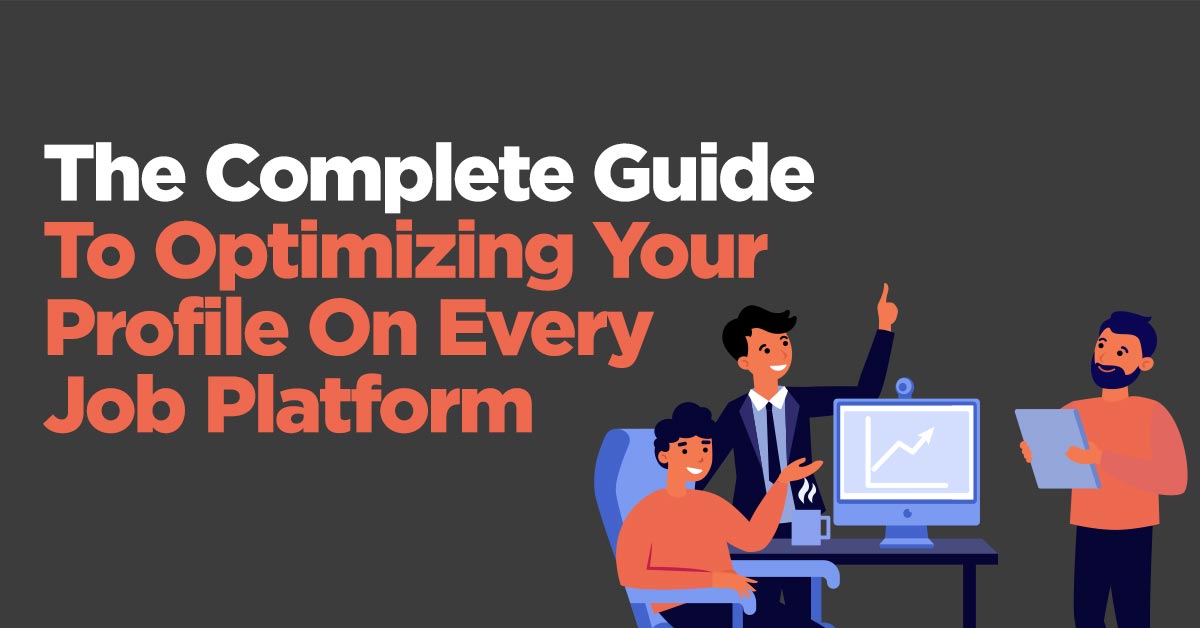Resumes Are Dead: The New Way To Showcase Yourself In The Digital World And Land Jobs Faster
Jump to:
Begin Reading here
You may be wondering how to create your own resume.
You might have lots of skills, but you don’t know what to highlight in your resume.
Today, you’re in luck!
This article tackles resume format and whatnots.
Also, this article will serve as a guide on the latest trend in social profile optimization.
Give Your Resume An Edge With Power Words
Your resume is essentially YOU- in words.
Have you ever thought of applying for that position you always felt was unattainable for you? It doesn’t matter whether this is your first time applying for a job or not. A person who’s never had a corporate experience is just as good as any candidate once their resumes start piling up on that desk.
Today, we are going to change that! Aside from a few tips and tricks on how to make an irresistible resume—yes, you’ve read it right!—one that no employer can ever resist looking at; you will also learn the art of using power words, effectively.
The last thing you want is to sell yourself short, especially on a job application. Remember, an interview allows you to market your resume for a good 5 minutes; longer if you can sustain an interesting and engaging conversation. However, before you can even go to that part of the process, your first mission is to make your resume stand out from the rest of your competitors and secure getting that phone call.
So, let’s get started and get you one step closer to your dream job!
Appearance breeds reminiscence. Your first goal is to be noticed and remembered! You want them to still be seeing your resume while looking at others’ profiles. Sounds a bit cheeky, eh? Play nice, but wise. t’s alright to get out of the box. Make sure to do a bit of research about the company that you’re applying for.
If the company happens to be in the creative business like advertising, marketing, magazine publication, and the like—the first thing you’d want to say through your resume is “I belong here.” Use available editing tools. You can even apply the ready-made templates that will match your aesthetic preference. Stick to your personality! Ask yourself, how would I present myself on paper?
Short but enough to transport. Now, contrary to what others are telling you, it is not wise to put everything you’ve got on your resume. As a matter of fact, that might serve as a disadvantage for you. Imagine sitting in front of your interviewer and being asked: “So, tell me something that is not on your resume?” What would you say then? The key is to make use of it as a conversation starter. Keep it short but interesting enough to ignite curiosity and interest. Besides, you don’t believe they’re actually reading every word, are you?
Now, we are down to the most crucial part of creating your irresistible resume…
Power words that fuel firm maneuvers. Did you know that one simple word can make a huge difference depending on how you use it? You need to stop choosing words that have a weak impact and start replacing them with power words that can definitely make your resume stand out. Similar to the first tip, the appearance of your resume reflects your personality; hence, the words you use in it also say a lot about you. Do not oversell. Power words create a big impact on your resume. You have to remember that there is a fine line between being a potential asset and an overbearing applicant. Imagine being too proud on paper and delivering mediocre results in the end.
Everything is good, especially if in moderation. It is best to limit the use of power words to one or two at most. Maximize it by adding them to lines that you really want to draw attention to. The people from Human Resources are mentally trained to look for these words, so make sure to catch their attention where you’re supposed to
Here are some great examples of power words you can use
Now, let us take some generic phrases often used in resumes and transform them into impactful statements using some of the power words above.
Instead of saying…
“Collected data for the project management and product implementation.”
You can say…
“Initiated data-gathering for the product management and implementation.”
Another great example would be to avoid using these generic words…
“Self-motivated”
“Hard worker”
“Team player”
These are phrases that are expected of you by employers without needing to see them on your resume. Instead of using those generic phrases, provide more detailed and substantial statements that will relay the same message but more effectively.
You can say…
“Volunteered assistance for the store transition to an e-commerce website. Partnered with various departments for building the company sales.”
In a nutshell, you must always take into consideration that what you put in writing is just as important as those you do not include.
Now, submit that resume, anticipate that call, and nail that interview!
10 Tips On How To Refine Your Resume And Make It Shine For Anyone Who Reads It
You might be wondering—do I really need to proofread my resume? Yes, absolutely. No, we don’t mean just a brief scan, but a meticulous review of everything you’ve written. This is a very important thing to do that is mostly overlooked by a lot of people.
Your resume is a reflection of who you are, on paper, at least. You do not have control over who reads it, or who will decide whether to consider it or not. On the other hand, you are in full control of what may be considered to draw them towards the outcome that is favorable to you.
So, here are 10 useful tips on how to proofread your resume.
1.Be intentional.
Proofreading is something that you should prepare for. Do not consider it as a part of the process of editing or updating. If you edited your resume today, schedule your proofreading for tomorrow. This will allow you to see it in a different light and may even help you come up with better ideas to enhance it if needed.
2. Use a spell-checker.
The last thing you need is a misspelled word on a very important document such as your resume. These technical errors are impossible to miss, especially if the one reviewing it is really particular about minute details. Simply put, if you can’t even spare some time to proofread your resume, how laid back can you get with other tasks that the company will entrust to you.
3. Use a grammar-checker.
That’s right! Most spelling mistakes are easy to identify for writing software, but this is not the case for grammatical errors—especially if you used the wrong word, to begin with. Can you imagine applying for a management post and having grammatical mistakes on your resume? That doesn’t sound appealing, does it?
4. Get a hard copy.
Remember when you printed out a bunch of pages for your project only to find out that there was one misspelled word on it and you had to go back and edit that and print them out again? Well, the same concept applies to proofreading your resume. Reading stuff on your mobile device or computer screen is different from reading them on paper. The latter identifies mistakes better.
5. Check your power words.
Proper choice of words is critical in designing an effective resume. But they are not meant to be overused. Make sure to review the power words you’ve used and identify other words that may still be improved or toned down. Remember, the things you put on your resume are just as important as the ones you don’t include there.
6. Read it to yourself.
Make it a habit to read your resume to yourself as if you are reading a book. Is it clear and concise? Is the information easy to understand? Is the storytelling applied effectively? You want a resume that simply tells a story. Captivating that it urges you to read more, but brief enough to make the reader want to know more.
7. Proofread by Section
As much as possible, you want all the necessary basic information to be there, especially your contact information. You wouldn’t want your resume to be disregarded just because it lacks the basic information they need to get in touch with you. Typically, the main part of your resume is the header, which includes your name, full address, phone number, and email.
There are optional sections that came from the old-school format – professional objective and qualifications summary – you may opt to include these or not. The next important thing is your educational background and work experience.
Generally, these are need-to-know sections, primarily for job positions that require a certain degree of years of experience. Lastly, your references. You have to make sure that the list consists of your colleagues or peers, preferably ones you’ve worked with in your previous companies. You are not supposed to include family members as your references.
8. Read it aloud.
Remember how you were asked at school to report in front of the class? Well, this is similar to that. One of the best things about proofreading your resume is also getting the chance to familiarize yourself with every aspect of information that is in there. Pretend that your resume is your script for a monologue. This is also a great way to anticipate questions you might come across during your actual interview. Just remember, if it sounds awkward, then maybe it’s worth a second look.
9. Call a friend.
If there’s one thing that you can’t miss in this process, then this is it! Always make it a point to have someone else read your resume. You want someone who can give you substantial feedback on your work. If you know someone with a background in human resources, management positions, and the like—they’re probably the ones you should reach out to for a second opinion.
10. Always a lesson
Don’t expect to identify all errors at once. You might be surprised to have a different perspective if you read the same resume five years from now. It is important to take note of your mistakes so you can have a reference in the future.
Are you done proofreading? What are you waiting for?
Submit that resume now. Go on, don’t be shy. You know you want to.
5 Ways To Identify If You Have A ‘Dead’ Resume Format
Do you ever wonder if employers read everything in your resume? To be honest, not everyone read it thoroughly. Some just glance at it, especially if it doesn’t pique their interest. Save your resume from being trashed. Here are ways to check what a dead resume looks like.
1. Too Generalized
A resume must contain your specific background and skills. For example, if you’re applying as a graphic designer, your experience being a content creator won’t bear much. Therefore, you need to specifically hone your description based on what they are looking for.
2. Highlights More On Duties
Your duties and accomplishments are two different things. If you make your resume, focus more on the details of how you complete a job. For example, state your knowledge and skills used to obtain measurable results.
3. Messy Formatting
An employer can identify if you took the time to polish your resume with just one look. Poor formatting is a deal-breaker. Your future boss can’t overlook out-of-date sections, tiny font, and bullet points. So always mind those little things. You wouldn’t want it to overtake your qualifications, right?
4. Dull Summary
A career summary gives the best gist of what you can offer. However, vague, overused, and general statements make employers think twice about reading them. That’s why it matters to create a focus on writing what the company needs.
5. Complicated Flow
A confusing resume is like a dead resume. Would you want to buy a fish if it’s obvious it’s stale? The same thing with your job application. Follow a chronological format if you’re going to catch your next boss’s attention. Always emphasize why you fit the role you are applying for.
Do you lack qualifications but possess suitable needs? No worries. You still have the potential to get hired. Make your resume more alive. Use this guide to make your resume look and sound like a pro.
However, it does not end there why resumes are dead. Employers take into account global digitization. So review your submitted resume and online accounts as they will surely check it.
Social Media: The New and Powerful Resume
Nowadays, employers do not only seek a paper resume format.
They also look into your social media account.
Therefore, it is vital to do social profile optimization to assess your character.
Fortunately, people often have their own social media accounts.
Whether it is for leisure or business, it matters to look and sound good. However, whatever you post should not be too different from who you really are.
Who knows who might visit you online. It might be your prospective boss. Don’t fret.
Here’s a guide on how to optimize your social media profiles.
How to Optimize Your Social Media Profiles: LinkedIn
A LinkedIn account itself is your living and breathing resume. All you need to do is update it often to entice more recruiters. Of course, your professional profile display and background photo must be catchy to attract employers soon. But don’t forget to post a brilliant and relevant headline. Nevertheless, it’s essential to optimize your title.
Check the formula
When writing your LinkedIn Title, make sure to follow this headline formula – [Job Title]: Helping X do Y. X reflects your ideal prospect while Y is your ideal outcome of the provided service.
Here is an example:
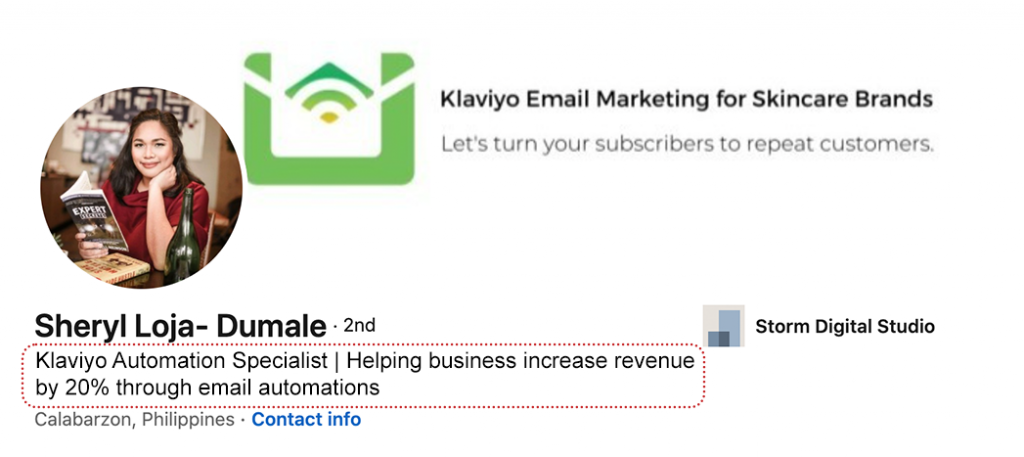
2. Fit it to your audience
Also, you need to tailor your title to your target audience. For example, your prospect might not recognize you if you use a general term like sales professionals or too specific terms like account representative, client advisor, or SBD. So instead, post whether you’re a sales representative, sales manager, sales associate, or sales director. This way, you are more recognizable and highly aligned with your recruiters.
3. Highlight your valuable proposition
Indicating yourself as a sales representative is not enough. For example, if you’re buying fruit, you prefer to know its taste right. So do the same with your LinkedIn title.
Take a look at this example below.
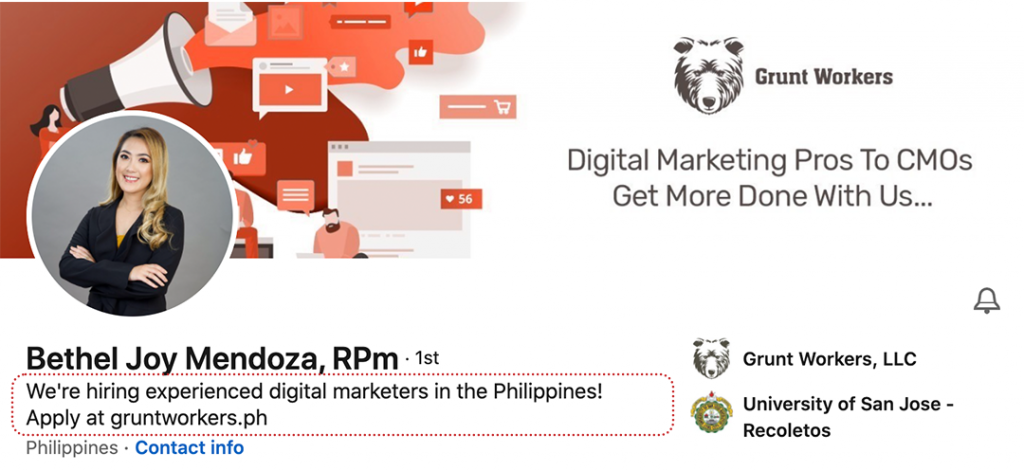
Or you may key it in like this.
“Sales Associate: Assisting companies with automated expense reports to money and time management.”
4. Avoid exaggeration
It sounds like you need to brag about your accomplishments with your LinkedIn profile. Somehow, it does because if not, who would take a second look into your account. But never overdo it.
You can post your achievement but don’t compliment yourself. Think about it. Every time you read someone say “expert” on Facebook, you always have second thoughts. So do the same with your LinkedIn title. Don’t use the following adjectives superior, best, top-performing, dedicated, proactive, and others. Instead, show off your skills through a successful client story just like this.
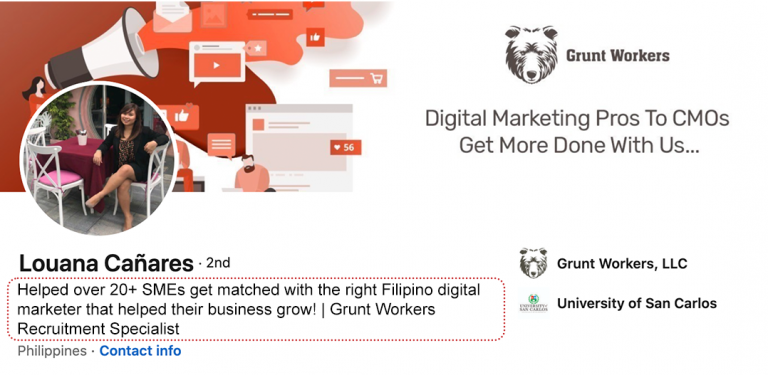
Or make a statement like this: “Helped an online cosmetic retailer increase sales by 20%.”
Your LinkedIn profile says a lot about your professional service. Highlight it more by following these tips for your title.
1. Impressive Job History
Only relevant details
LinkedIn allows you to work on one specific role. You have to edit your work history related to your next target role.
2. Emphasize your recent roles
If you have a 10-year of job experience, focus on your current responsibility. Don’t put all of it in your resume. Instead, indicate your accomplishment and were able to attain it.
3. Use action words
When you describe your job history, start it with an action verb. Use words like created, directed, implemented, etc. Also, be specific about the results of your action. Develop your sentences with ACTION = RESULTS.
Take a look at this: “Raised sales by 15% during the first year of service.”
Others might not know this, but your work experience section creates a massive impact. Nevertheless, it should mirror what you posted on your LinkedIn headline.
How to Optimize Your Social Media Profiles: Onlinejobs.ph
Getting clients as your next employer is a challenging task. Aside from honing your resume, you need to look for social platforms that will welcome you with open arms. Onlinejobs.ph is one of the most accessible. Registration is free! Although it comes with a 10-application per day limit, it offers new job opportunities every day.
If you want to land a job contract, do social profile optimization in your Onlinejobs.ph. Start with your personal details, IDs, and best professional photo. Afterward, take all the tests as proof of your proficiency. Then, list all your skills and rate them. Take time and be honest when fulfilling this.
Lastly, write your job application letter. But, avoid the usual copy-paste theme. Instead, be specific about and indicate your relevant experiences and skills. Plus, cite your expectations too! Check out this example.

How to Optimize Your Social Media Profiles: Upwork
Upwork is one of the biggest platforms to upload your resume. That being said, the competition to get an employer’s attention is tough.
If you want to secure a job that fits your qualifications, you need to focus on your job title, photo, and overview. Putting up a “graphic designer” title is like displaying shirts along with thousands of shirts. Step up your game by being creative. Add a professional logo to your interface to stand out.
Your Upwork profile photo is not something extravagant. Upload a professional close-up shot with your best genuine smile. Lastly, write yourself a description but don’t oversell it. Describe and emphasize what you can actually do for your client. Plus, your spelling and grammar errors matter too! Never overlook them.

Simple Best Practices For Twitter When You're Looking For A Job
It might not be obvious, but recruiters look into Twitter when hiring. You can use this platform to sell yourself on the service you are best at. Post and upload appropriate Twitter content instead of posting controversial matters. You can create hashtags that recruiters search for. You can even mention the company you’re eyeing in your Tweet. However, there’s a 140-character limit that comes with it. No worries. You can still post your resume here with a URL shortener.
Also, you may include your personal website or LinkedIn profile. Your next employer can learn more about your background and experience. Plus, don’t forget to engage in tweets. It attracts more attention so you can get hired fast. You should use all accessible social media like Twitter. This way, you have a better chance of getting the job you need.
In addition, you need to make your Twitter profile professional and employer-friendly. Look at this example.

Simple Best Practices For Facebook To Secure A Job
More often than not, networking and building relationships create more opportunities. It is typical when you have a Facebook account. If you want to secure a job, you need to tailor your profile from your personal stuff to work.
One way to do it is through your professional profile display and cover photo. It’s best to have a personal logo or interface that reflects your service offers. Don’t forget to add your educational background and job history. But what might set you apart from other aspiring employees is adding your personal website. If you don’t have one, you can post your LinkedIn profile and other social media accounts. It greatly shows your professional presence.
But here’s a little quick tip, keep your Facebook profile clean. Stay clear from political and religious views. Also, avoid posting defamatory statements, malicious photos, and other similar matters. It doesn’t mean you have to hide your personal stuff. You can still show the real you in your account but follow some regulations. Check this example.

Simple Best Practices For Instagram To Get Hired
Instagram might be the last social media you’d think of when looking for a job. Many believed it was for uploading photos and video clips with catchy captions. But what they don’t know is that it is a potentially untapped source of opportunities. Every day, millions of Instagram users view IG stories and reels. So why not grab it to your advantage. Who knows, you might meet your next boss online.
First things first, create a professional Instagram profile. Attach a professional headshot-style display. Then, add your website link and other professional social accounts like Facebook, Twitter, and LinkedIn. In your bio section, promote yourself within the allowed 150 characters. You can include your previous and current work. Don’t forget to add your skills too!
In addition, you need to keep your account public and accessible. Most importantly, post career-related photos with appropriate hashtags. This way, employers can see easily view your profile. However, you need to keep your personal account private to let your professional IG account shine. Let this one be your sample.

Social profile optimization truly empowers your resume. It now plays a vital role in your career growth. Before, you intend to check your accounts for fun. But now, it helps you land for a job that you highly qualify for.

